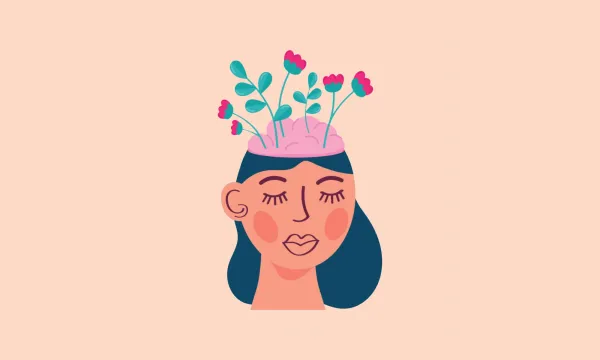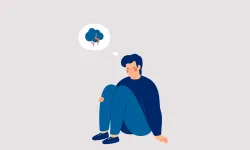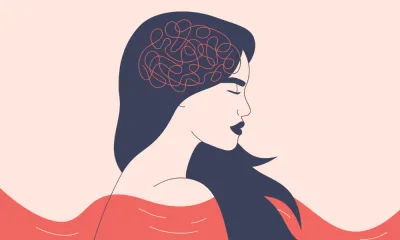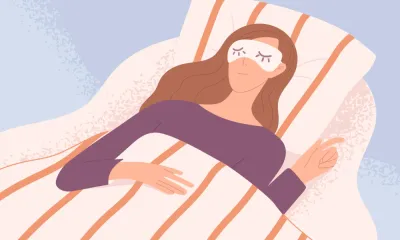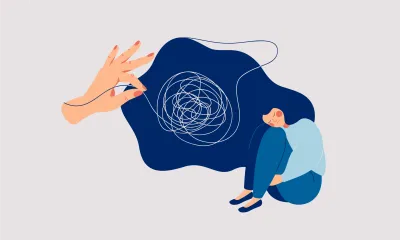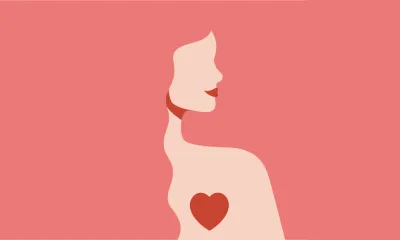Our mental health matters just as much as our physical health, though many of us often neglect caring for our emotional wellbeing in the same way we care for our physical body.
Unfortunately, mental disorders like depression and generalized anxiety disorder are becoming more and more prevalent, and these mental conditions are impacting our overall health in negative ways.
If you're part of the four percent of the world's population who lives with an anxiety disorder or even just a person who frequently battles anxious feelings, you've probably tried to find a solution that will reduce your symptoms and provide you with relief.

But have you tried mindfulness for anxiety?
Things to know
- Mindfulness is a state of mind in which you focus entirely on the present moment.
- Reduce symptoms of anxiety by directing your attention to the present moment and practicing non-judgmental stance.
- Guided meditation, the 5-4-3-2-1 grounding technique, and visualization exercises are some examples of mindfulness techniques that can also help with anxiety symptoms.
In this article we're going to examine 8 simple mindfulness techniques which have been known to help with the symptoms of anxiety:
- The 5-4-3-2-1 Grounding Technique
- Guided Meditation
- Square Breathing
- Progressive Muscle Relaxation
- Mindful Walks
- Coloring or Drawing
- One-Mindful Tasks
- Mindful Journaling
But first let's look at the concept of mindfulness
What Is Mindfulness?
"Mindfulness" has become quite the buzzword in recent years. Yet, for whatever reason, a lot of people still don't know exactly what mindfulness is. Even if they have heard the term, some people still directly associate mindfulness practice with meditation.
However, mindfulness is so much more than just meditation, and it's important to understand that.
In a nutshell, mindfulness is a state of mind in which you focus entirely on the present moment. This means you focus your full attention on what you're doing and how you're feeling at any given moment without letting your mind wander.
You aren't focused on the past or the future, you simply allow yourself to remain in the exact moment you currently exist in, regardless of how exciting or mundane it is.
Mindfulness also involves taking a non-judgmental stance in the present. This means you don't criticize yourself, and you allow yourself to experience whatever emotions and physical sensations occur without dismissing them.
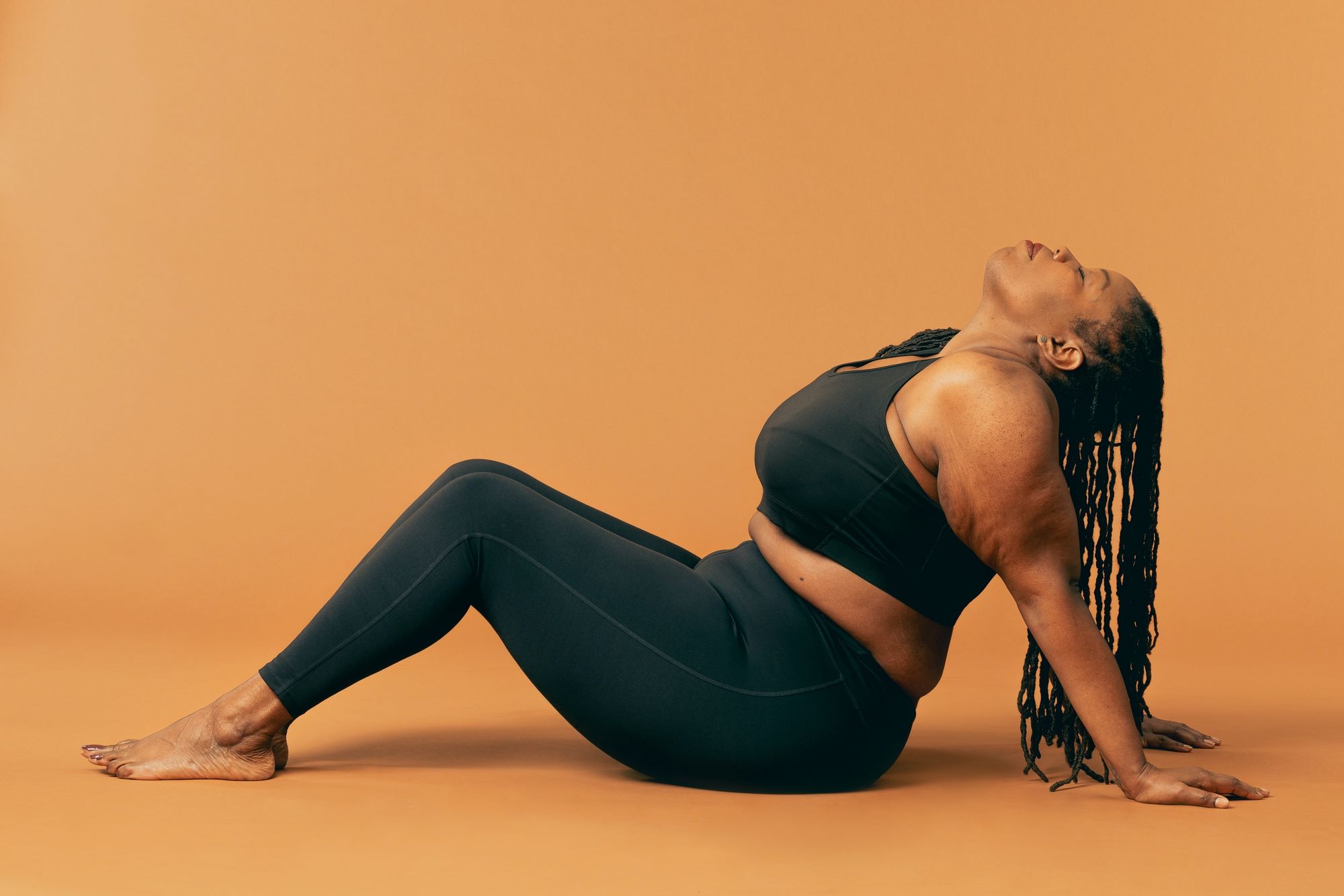
This aspect can be especially difficult for people who were conditioned to ignore negative emotions like fear or shame.
Although the art of mindfulness comes from ancient Buddhist practices, several forms of clinical psychology now incorporate mindfulness training into the mix. These types of therapy include cognitive therapy (CBT), dialectical behavior therapy (DBT), and acceptance and commitment therapy (ACT).
How Mindfulness Helps With Anxiety
Over 264 million people around the world live with an anxiety disorder and even more people than that experience anxious symptoms on a fairly regular basis.
In fact, anxiety is one of the most prevalent mental disorders in the world, and many people search for ways to cope with panic attacks and other strong emotions that come with living with anxiety.
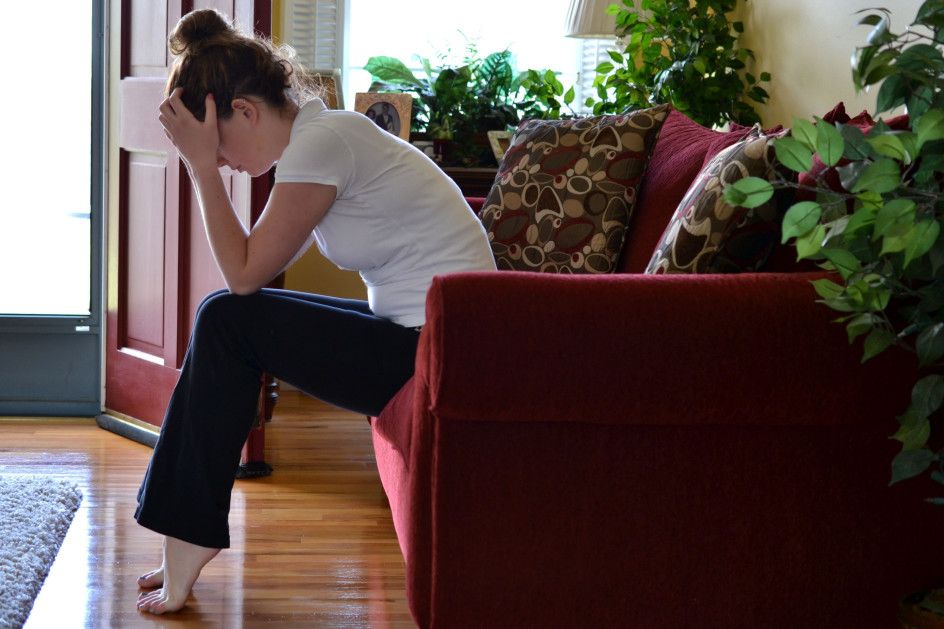
While there are medications and other forms of treatment out there, many people find that mindfulness exercises are highly effective in lowering anxiety symptoms and panic attacks.
Since mindfulness practices teach you to focus on the present moment, it often quiets the worries that crop up inside our minds throughout the day. It almost works as a distraction since mindfulness redirects our attention and gives us something to replace the worries and anxious thoughts that run through our brains.
Mindfulness also requires our full attention and focus, which leaves little room for our minds to wander somewhere else. Instead of thinking to ourselves as we perform work or ride mass transit, mindfulness encourages us to engage all of our senses in the present, which in turn delivers a greater reduction in our brain's capacity to hold onto fear.
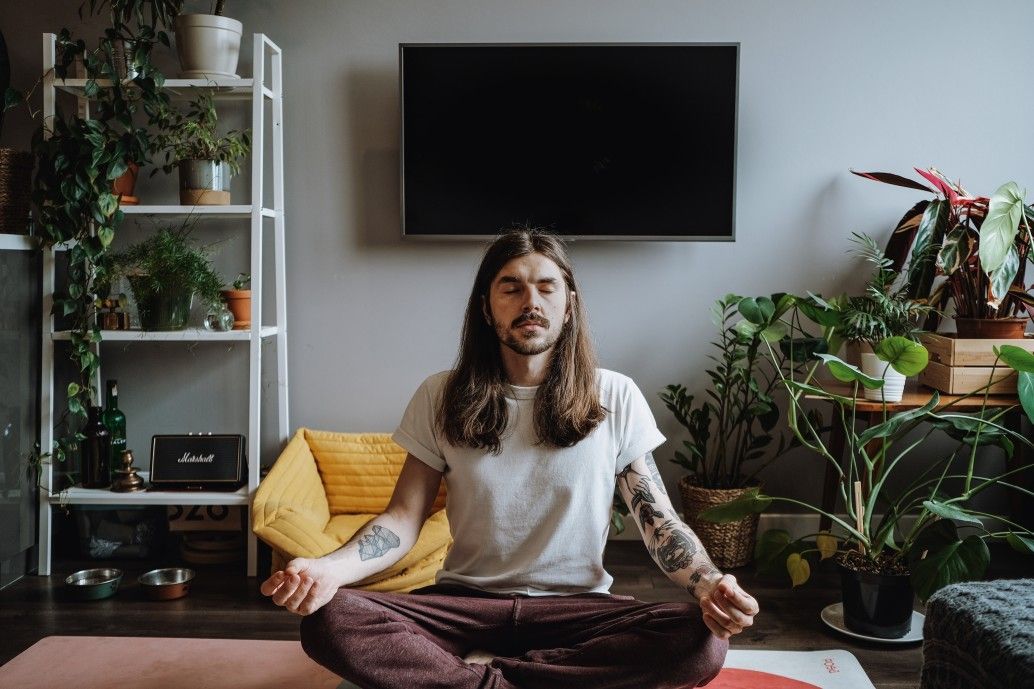
Of course, there are aspects to mindfulness that also engage our brain's autonomic, or involuntary, nervous system. For example, deep breaths and other stress-reduction measures built into mindfulness techniques help "turn off" our body's stress response and instead "flip on" our rest and digest functions.
This can greatly help reduce anxious thoughts, especially those that come with specific diagnoses like generalized anxiety disorder or social anxiety.
8 Mindfulness Techniques For Anxiety Symptoms
Now that we understand how mindfulness interventions help reduce anxious feelings, it's time to learn some specific techniques you can use to help you relax. While there are many forms of mindfulness practice out there, these are eight mindfulness exercises that nearly anyone can perform.
In fact, you can do many of them anywhere at any time.

1. The 5-4-3-2-1 Grounding Technique
If you experience frequent anxiety attacks, then grounding exercises may be highly beneficial. These exercises often help you reorient yourself in the present moment by engaging your senses, which in turn lowers your distress so you can move through your anxiety.
The "5-4-3-2-1" exercise is one of the most popular and easiest grounding techniques. It encourages the user to use their senses and the space around them to ground themselves.
To do this mindfulness activity, you identify: 5 things you can see, 4 things you can feel, 3 things you can hear, 2 things you can smell, and 1 thing you can taste.

2. Guided Meditation
A guided, or mindfulness meditation is a specific type of mindfulness exercise led by a guide. Usually, these exercises involve some sort of visualization or paced breathing.
This is one of the more popular forms of mindfulness for anxiety because it can quiet your anxious thoughts and place your body into a state of relaxation.
Thanks to modern technology, many people access guided meditations through YouTube or smartphone apps like Headspace. You can find meditations that last anywhere from two minutes to 30 minutes (or more).
If you don't enjoy pre-recorded guided meditations, that's okay. There are also visualization exercises you can teach yourself to do without having to listen to someone talk. One such activity is called "Conveyor Belt of Thoughts," where you place your thoughts on a conveyor belt and let them roll away.
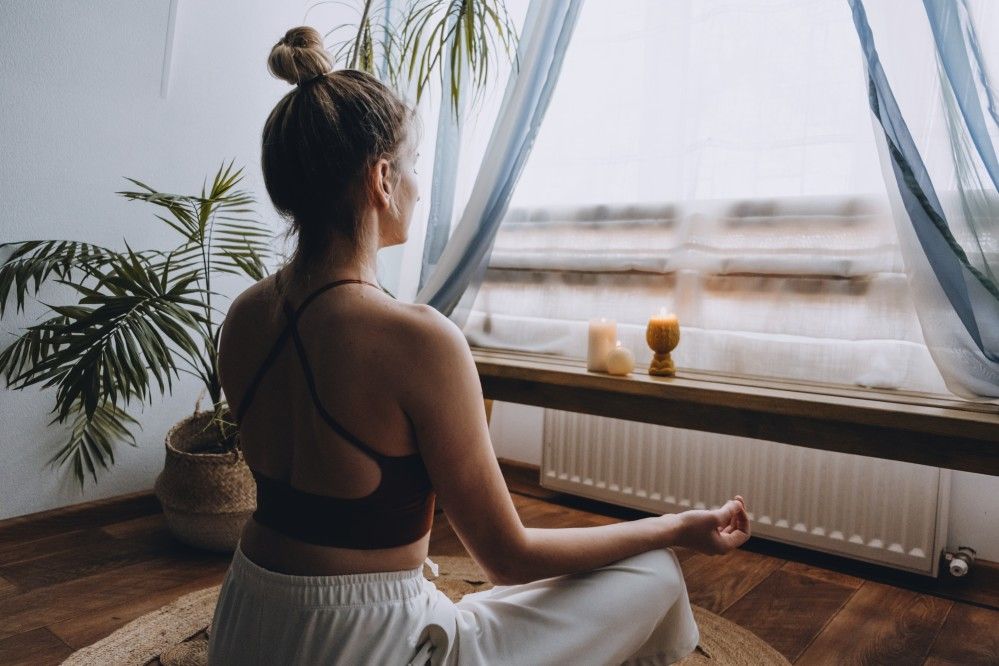
3. Square Breathing
Square breathing (also called box breathing) is a specific type of mindful breathing in which you visualize a square and pace your breathing based on the sides of the square. This exercise helps your body engage the parasympathetic nervous system or the body's "rest and digest" state.
With this exercise, you imagine moving across the top of the square while you breathe in, hold as you move down the right side of the square, exhale as you move across the bottom, and hold again as you work your way back up the left side of the square. You can do this as many times as you need to calm your anxious feelings.
Many people find this form of paced breathing exercise extremely helpful, but it also isn't the only option. You can also try other forms of paced breathing, like 4-7-8 Breathing. In this activity, you simply inhale for 4 counts, hold for 7 counts, and exhale for 8 counts.
You can also try different types of breathing, or even lay on the ground with a book on your stomach to help you focus on your breath. Whatever works for you will ultimately help you reduce your symptoms and quiet your mind, which makes it an activity worth doing.
4. Progressive Muscle Relaxation
Progressive muscle relaxation is a type of physical relaxation that helps people lower their stress and anxiety levels by forcing muscles throughout the body to relax.

This relaxation technique is so effective for anxiety and other intense emotions that it's part of the TIPP Skill in dialectical behavior therapy.
For this mindfulness practice, you focus your attention on individual muscle groups throughout your body as you alternate between tensing the muscles and then relaxing them. You continue doing this until you've relaxed every muscle group in your body.
For example, if you start with your feet, you'd breathe in and squeeze your feet as tense as possible for several seconds, then release the tension as you exhale. Then, you'd move on to your calf muscles, and continue up your body until you reach your head.
The goal is to feel your body release all its tension. It's best to perform this exercise in a quiet place, such as your bedroom, and plan for about 15 minutes to complete the whole activity. Also, if you experience chronic pain in addition to anxiety, this can be a great daily exercise for you.
5. Mindful Walks

Any type of physical activity in your daily life is highly beneficial. However, many people use walking outdoors as a stress reduction activity since aerobic activity often lowers the reactivity of our sympathetic nervous system or "fight or flight" response.
Mindful walks can be particularly beneficial for those who live with an anxiety disorder because they both reduce emotional reactivity going forward and help provide relief in the moment.
For this mindfulness intervention, you just need to go outside and take a slow, intentional walk. You can pay attention to what you see, hear, and smell. You can also pause to touch items, and even observe the physical sensations you experience as you wander.
If you can't get outside, that's okay. You can also perform a mindful walk inside. Just take off your shoes, and walk slowly through part of your house or workplace. Pause to notice things. Label what you hear or see. Just focus on the present moment.
6. Coloring or Drawing
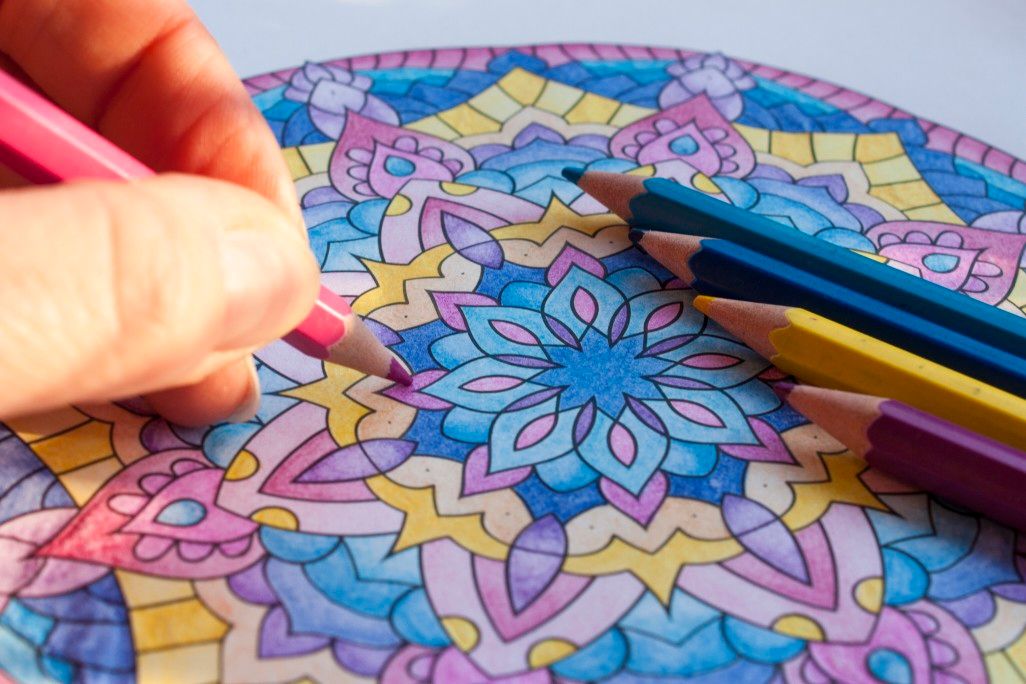
If mindfulness meditation and mindful breathing aren't for you, don't worry. There are some activities that provide all the benefits of focusing in the present moment but don't even feel like mindful activities at all.
Some examples of this include coloring and drawing. Believe it or not, coloring and sketching actually relax your amygdala, which is the part of your brain that controls emotions like fear and anxiety.
The repetitive motions and focus on creativity sort of quiet your mind and help you focus on the moment, which allows your brain to relax and rest. Many people find coloring or doodling to be very soothing, and this is likely why.
7. One-Mindful Tasks
Like coloring, chores can be another seemingly basic task that provide an outlet for you to mindfully engage in your life. Although many of us tend to "zone out" during mundane tasks like washing dishes and running the vacuum, the goal of performing tasks one-mindfully is to not do that.

Instead, you want to completely immerse yourself into what you're doing — no matter how boring that seems.
For example, let's say you have a sink full of dirty dishes:
When you wash them, focus on every aspect of the chore. Smell the soap. Feel the sponge or rag in your hand. Watch the suds form on the plates as you scrub them. Notice the way in which the water from the faucet rinses away the soap. Listen to the sound the plates make as you stack them back into the cabinet. It's all part of the process.
When you perform tasks like this in a mindful way, you almost sort of gain an appreciation for everything you do in a day's time. You also quiet your mind and release those negative thoughts that often grab hold of your attention because you've focused your thoughts and feelings elsewhere. It's very gratifying.
These mindful tasks don't have to involve chores. You can also apply these same principles to perform mindful eating or even try your hand at mindfully getting dressed in the morning.
8. Mindful Journaling
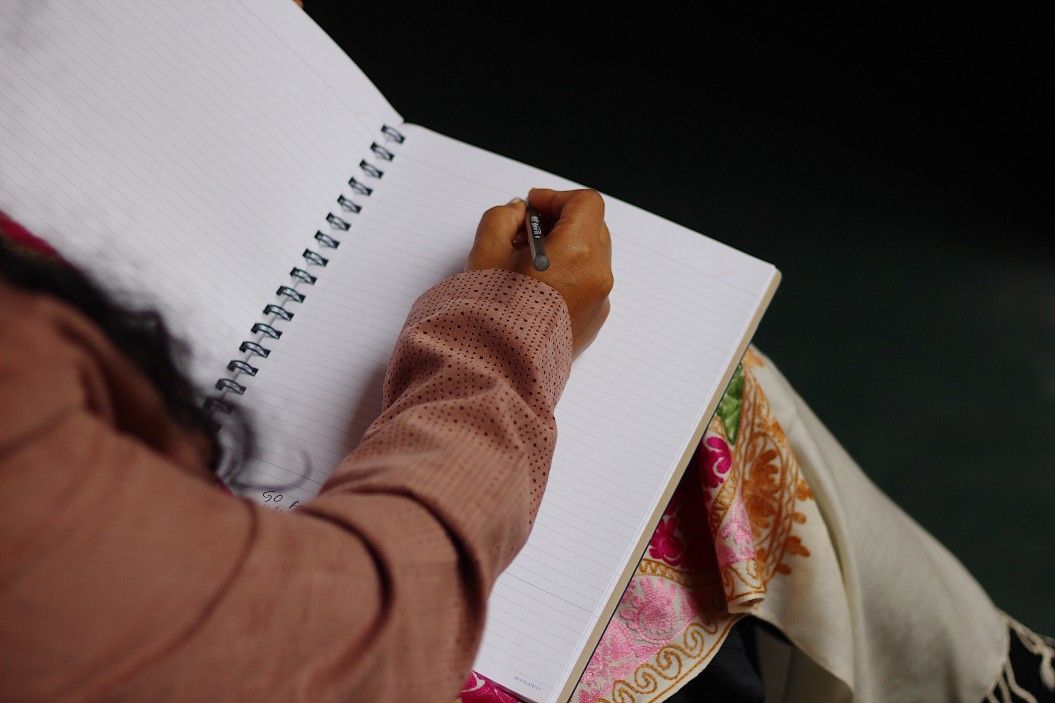
As the name implies, a mindfulness journal is a specific type of journal designed to help you achieve a mindful state of being. Typically, these journals contain prompts to help you focus.
The act of mindful journaling can lower your emotional distress and boost your self-awareness, which will help you reduce your anxiety symptoms so you can go on living your best life.
There are many mindfulness journals available these days, so you can go to the store and select one that works best for you. Just remember to look for ones that will provide you with the most benefit based on your interests, likes and dislikes, and type of anxiety you experience.
Add a Mindfulness Practice To Your Day
As you can tell, these mindful exercises can seriously help with the psychological distress brought on by panic attacks and anxious thoughts. They can help you learn to quiet your mind, lower your stress levels, and even avoid anxious feelings altogether. This can do numbers for your overall health and life satisfaction, which is something we all deserve.
So, whether you seek out a mental health professional who uses treatment methods like mindfulness-based cognitive therapy or you simply adopt some of the mindfulness exercises recommended in this article, I seriously hope you will consider adding some sort of mindful activity to your daily life. After all, you deserve to live a long, healthy, joyful life filled with all of your favorite activities.


